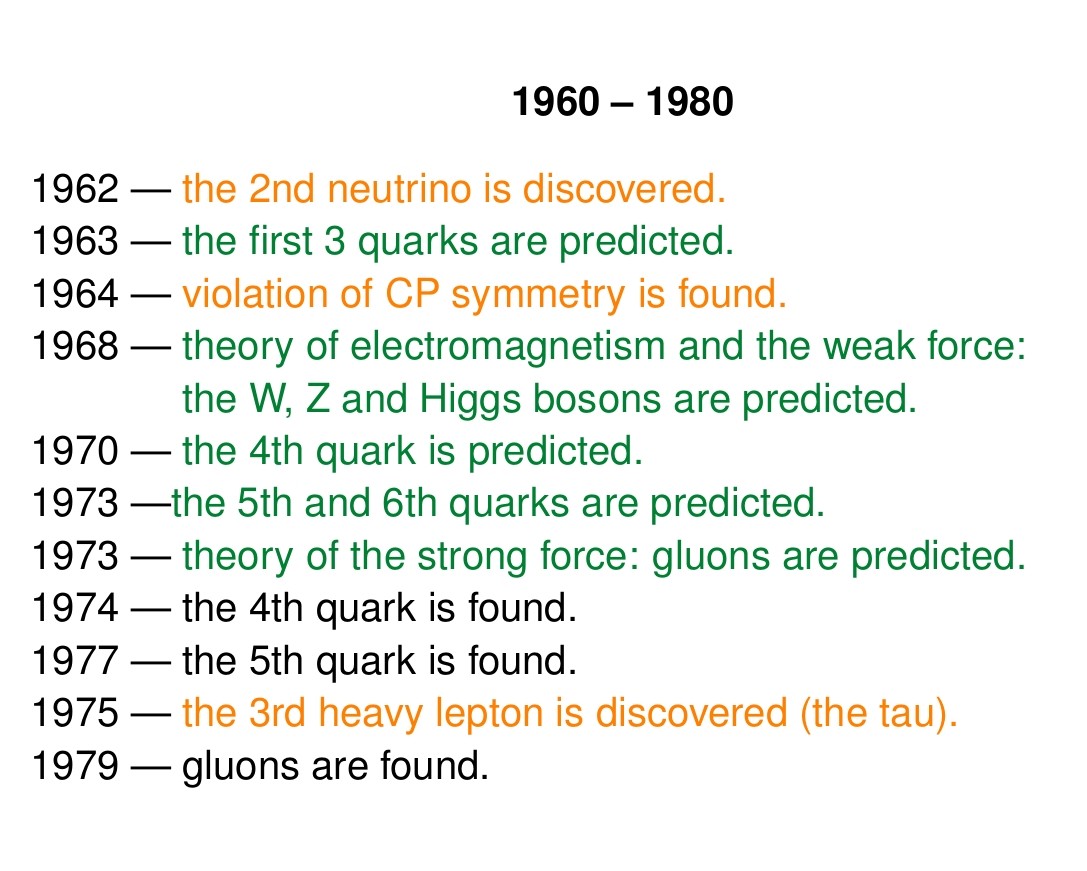Post
In fundamental physics, the period from 1940 to 1960 looks a bit slower than the previous two decades. Perhaps World War II slowed things down.
But the development of quantum electrodynamics was huge. People had been trying for decades to unify quantum mechanics with special relativity - that is, understand a world where space and time are unified and all particles and forces are described using linear algebra. Initial attempts gave infinite answers to physics questions.
Only when Tomonaga, Schwinger and Feynman developed "renormalization" did this project begin to succeed. At first it only applied to charged particles interacting by exchanging photons. This is called quantum electrodynamics. But this opened the floodgates for future work on quantum field theory.
Pauli had predicted there must be a hard-to-detect and almost massless particle which he called the "neutrino". This was found in 1956. It turned out to be just the first of three.
And also in 1956, a huge experimental shocker: Wu discovered that left and right are fundamentally different!
(4/n)
0
0
0
The period from 1960 to 1980 was the heyday of particle physics! This is when I was a kid, so you can see I wanted to work on fundamental physics.
There was a thrilling interplay of theory and experiment. There were plenty of experimental surprises that were later fit into the Standard Model (in yellow), but also brand-new theories, now parts of the Standard Model, that were later confirmed by experiment (in green).
The 2nd neutrino came as a surprise, but the first 3 quarks were predicted to exist, by Gell-Mann, Zweig and others, based on data about the zoo of particles (made of quarks) that were being discovered. Electromagnetism was unified with the weak nuclear force in a theory that predicted the W, Z and Higgs bosons. Then 3 more quarks were predicte - and people came up with a theory of the strong nuclear force that holds together quarks, saying that it's carried by bosons of its own, jokingly called gluons.
The biggest experimental surprise in this era is the discovery that not only is left different from right, the world also change if you could switch left and right while switching matter and antimatter. This is called the violation of CP symmetry. This too is now a key part of the Standard Model.
You'll notice that, despite all this excitement, physicists were starting to probe realms very far from everyday human experience. Unlike work down in the first half of the century, it's hard to use these theories to build new technologies. The low-hanging fruit had already been picked when it comes to finding new fundamental laws. By this time, most physics was about *applying* the laws we already knew.
(5/n)

0
0
0








